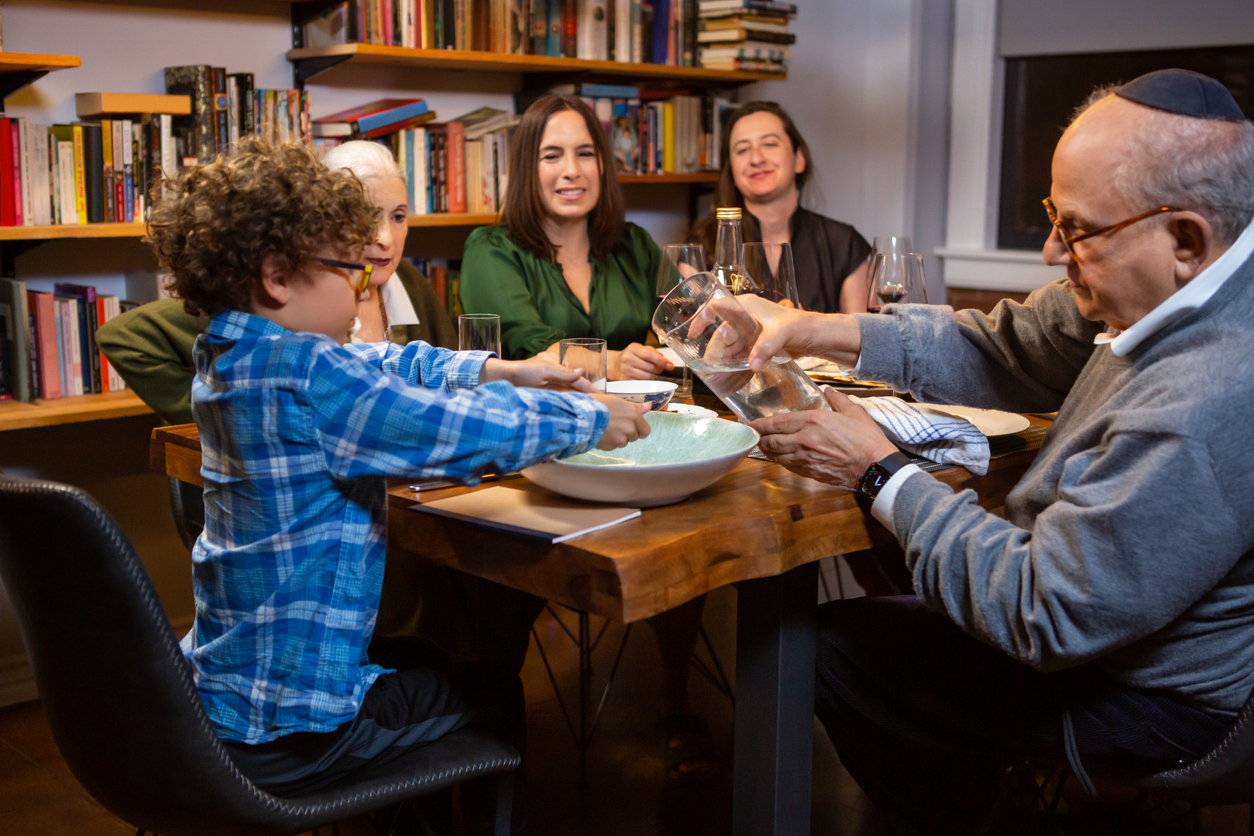
How students can show up in the classroom today has certainly evolved.
Not only are academic standards and lesson plans more streamlined and inclusive of all students’ needs, but technology is also at the top of its game.
Social standards and scenarios are focused on inclusivity, diversity, and equity. Students are encouraged to share their backgrounds, nationalities, family structures, and religious preferences, which was not always the case.
Your classroom is a diverse and rich community; representation is vital to continue to build a positive culture and climate. There are numerous ways to work discussions, lectures, and interactive activities into your Social Studies and ELA curriculum that help enrich an understanding of various holidays in our own country and around the world.
The best way to learn from each other is to get to know each other. Our beliefs, customs, and cultures are great entryways to sharing who we are.
Whether you have students who observe the Jewish holidays like Passover, Rosh Hashanah, and Yom Kippur or not, here are some great activities that enhance understanding of the high holidays and provide representation in a new and approachable way.
"Passover is a religious feast celebrated to honor the freedom of the children of Israel who were led out of Egypt by Moses."
Passover Activities
Passover is a religious feast celebrated by those of Jewish descent to honor the freedom of the children of Israel who were led out of Egypt by Moses.
Here are some things you can do in your classroom that help children understand this event:
Seder Plates
To introduce the topic of Seder plates, have a burlap bag filled with decorated stones. The stones should have the following picture and labels: shank bone, parsley, lettuce, egg, charoset, and bitter herb. Then, call on students, one at a time to pull out a stone and discuss what is on it. This is a great time to discuss the feast and the symbolism of each item on the plate.
On a blank paper plate, students can draw, label, and color each item. They will learn how each item is placed on the plate. This is a great time to invite students who do participate in Passover to explain some new and modern things they have on their plate (olives, oranges, artichokes, tomatoes. for example).
Passover “Old Maid” Card Game
Expose your students to some pictures and terms that are significant to Passover by playing a beloved classic card game, “Old Maid.” Instead of calling it by the traditional term, you can explain that in Hebrew, it is called “Chametz.” Students will see pictures of things written in Hebrew and also English. You can make cards that show items from Seder, Moses, and Pharaohs-anything that has to do with the event that you feel is age appropriate and important. The students get into pairs and make matches. They take turns picking cards from one another until someone is left with the Chametz.
You can find other activities to use in your classroom to celebrate Passover here.
"Rosh Hashana signifies the start of the Jewish new year."
Activities To Celebrate Rosh Hashanah
Rosh Hashana signifies the start of the Jewish new year (according to the Jewish calendar) and a time to reflect on the creation of the world. Many traditional family activities can be amended for classroom use.
The Tashlich Pond Activity
One tradition is called the tashlich; this is when family members will travel to a body of water and symbolically cast off their sins from the previous year by throwing pebbles or bread crumbs into the water.
Take the students ( this could work with young children in PreK through high school students- even homeschool students of any age) outside to collect one pebble to return to the classroom. Fill a small, plastic kiddie pool or even a large pot with water and place it in the center of the classroom. Without voicing anything aloud, ask each student to think of one situation this past year where they wished they had reacted or behaved differently. Then, tell each of them that by placing their pebble in the “pond,” they are releasing themselves from that choice in order to move on and make better choices in the future. It could even be a way to say, “I’m sorry”. Allow each student to come up one by one and place their pebble in the pool.
Celebrate With Food
Food is a large and symbolic part of a Rosh Hashanah celebration. Another way to bring those traditions into the classroom is to bring the food with it. Tradition calls for wishing others a “sweet new year” by making and eating sweet foods. Apples dipped in honey are a common choice for Jewish people, as is the making of challah bread. Pomegranates are also a traditional choice, as it is said that there are 613 seeds in a pomegranate, the exact amount of mitzvahs or commandments in the Torah.
There are ten days between Rosh Hashanah and Yom Kippur. That period of time is referred to as “the days of awe” or “the days of repentance”. Jews take this time to seek out anyone they have wronged to ask forgiveness.
Related resource: What is Yom Kippur?
"Yom Kippur is the holiest day of the year in Judaism and considered a day of atonement. Observed by fasting for 15 hours, participating in prayer, and spending time with family in a synagogue"
Activities to Celebrate Yom Kippur
Yom Kippur is the holiest day of the year in Judaism and is considered a day of atonement. It is observed by fasting for 15 hours, participating in prayer, and spending time with family in a synagogue. Jews observe this day to atone and repent.
To better help your learners understand this holiday, here are some activities that you can try:
Shofar Parade
A shofar, or horn, is blown at the end of Yom Kippur. It lets everyone know that atoning for your sins is over. It’s an exciting time for all! Get your students excited by helping them make and decorate their own shofar.
Using a small toilet paper roll, cut one side of it from top to bottom. Demonstrate how to roll it up, creating a point and mimicking a horn’s shape. Using some strong, clear tape, ask students to secure their shofar’s shape. Once secure, have a wide range of paint and crafts available on a table for students to decorate it as they like. Once dry, go on a walk, forming a parade line, allowing each child to blow their horn to kick off the celebration.
The Story of Jonah
The story of Jonah and the whale may be familiar to some of your students. In the Jewish tradition, it is read on Yom Kippur as a reminder that if G*d could forgive Nineveh, no one is beyond his forgiveness. You can read an abridged version of the story to your class accompanied by coloring pages, worksheets, word searches or other printable activities. This is a great Yom Kippur activity for younger grades.
The period of Sukkot begins directly after Yom Kippur. Jewish families will erect a sukkah ( much like a tent or dwelling outdoors) to symbolize the dwellings of the Israelites in the desert. This would be a fun activity to build as a class out of cardboard boxes to have snacks or a quiet reading space.
Related resource: Jewish High Holy Days: Rosh Hashanah to Yom Kippur
Celebrating Cultures And Traditions
While Hanukkah is the most widely recognized Jewish holiday, Passover, Rosh Hashana and Yom Kippur may be entirely new for many of your students. Others might be purely delighted that you’re making an effort to understand their background and beliefs. While these activities are fun and meaningful, it’s always most effective to invite students (if they feel comfortable) who observe these holidays to share their own experiences and thoughts. This can be more effective than any craft, game, or activity.
For more resources and information, visit our Judaism Resources Page.










